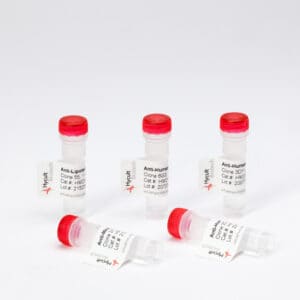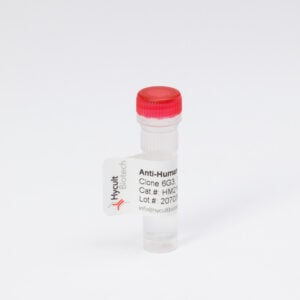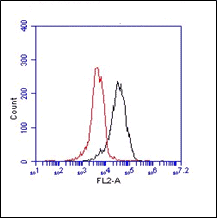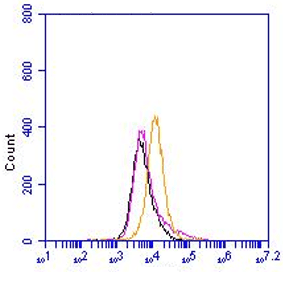
PECAM-1, Mouse, mAb ER-MP12
€133.00 €320.00Price range: €133.00 through €320.00
The monoclonal antibody ER-MP12 recognizes mouse platelet endothelial cell adhesion molecule-1 (PECAM-1;CD31). PECAM-1 is a 130kDa glycoprotein involved in- cell adhesion and a signalling receptor that is expressed on hematopoietic and endothelial cells. It is a member of the immunoglobulin (Ig)-superfamily of cell adhesion molecules. The type I transmembrane protein is composed of an extracellular region of six Ig-like homology domains, a 19-residue transmembrane domain, and a 118 residue cytoplasmic tail and is differentially glycosylated involving N-linked and O-linked glycosylation sites. The signalling of PECAM-1 is based on 2 immuno receptor tyrosine inhibitory motifs (ITIMs) in its cytoplasmic domain. These ITIM domains can serve as docking sites for signalling molecules such as protein tyrosine phosphatases, and ligation of PECAM-1 can induce phosphorylation of tyrosine- and serine/threonine-residues of these intracellular regions eventually leading to activation of signalling pathways. The biological characteristics- of PECAM-1 in these pathways and cellular adhesion have been mapped to specific regions of the PECAM-1 molecule.
PECAM-1 is abundantly expressed on endothelial cells, where it is a major constituent of the endothelial cell intercellular junction in confluent vascular beds, making it a commonly used endothelial marker. Furthermore, it is expressed on most cells of the hematopoietic lineage including platelets, monocytes, neutrophils, and lymphocyte subsets. Besides adhesive properties PECAM-1 is an efficient signalling molecule. The protein is involved in vascular biology including- angiogenesis, platelet function, and thrombosis, mechanosensing of endothelial cells, and regulation of multiple stages of leukocyte migration through venular walls. PECAM-1 is also a regulator of inflammatory responses. It has been shown to serve a variety of pro-inflammatory and anti-inflammatory functions. Pro-inflammatory functions of PECAM-1 include the facilitation of leukocyte transendothelial migration and the transduction of mechanical signals in endothelial cells originating from fluid shear stress. Anti-inflammatory functions include the dampening of leukocyte activation, suppression of pro-inflammatory cytokine production, and the maintenance of vascular barrier integrity.
Monoclonal antibody ER-MP12 reacts also with the major population of colony forming unit macrophage (CFU-M) precursor cells, with a subpopulation of pre CFU-M and monoblasts, and with precursor cells of granulocytes. The antibody can also be used, in combination with the monoclonal antibody ER-MP20, for identification of different stages of myeloid progenitor cell development.




